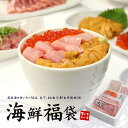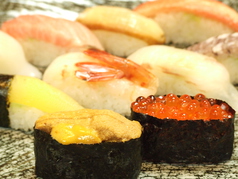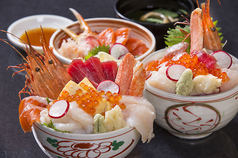- Introduction
- Basic Knowledge of Aomori Tuna
- Touring Famous Tuna Producing Areas in Aomori Prefecture
- Seasonal Aomori Tuna Tasting Guide
- Tuna Pro Tips: Judging Points
- Cooking Methods & Recipes to Enjoy 100% of Aomori Tuna
- Good to Know! Trivia for Tuna Connoisseurs
- Conclusion: The Journey to Mastering Aomori Tuna
Introduction
Aomori Prefecture is known as one of Japan’s leading tuna producing regions. Among them, Oma tuna is world-renowned as the “King of Tuna“, and at the first auction of the Tsukiji Market (now Toyosu Market), it has fetched high prices exceeding 100 million yen per fish in the past. However, the appeal of Aomori tuna is not limited to Oma. In Aomori Prefecture, surrounded by the sea on three sides – the Tsugaru Strait, the Sea of Japan, and the Pacific Ocean – tuna with various characteristics are landed in each region.
This article explains the tuna production areas within Aomori Prefecture, the types of tuna, seasonal differences, and the best ways to enjoy them. It’s a guide to understanding the “Real Aomori Tuna“.
Basic Knowledge of Aomori Tuna
Types of Tuna Caught in Aomori Prefecture
The following types of tuna are mainly caught in the waters of Aomori Prefecture:
- Bluefin Tuna (Hon-maguro): High-quality tuna mainly caught in the Tsugaru Strait, including Oma. Characterized by its good fat content and rich umami flavor.
- Albacore Tuna (Binnaga / Bincho): Caught on the Pacific side, including off the coast of Aomori Prefecture and the Sanriku coast. It has a light and refreshing taste.
- Bigeye Tuna (Mebachi): In addition to those caught in nearby waters such as off the coast of Hachinohe, many caught through distant-water fishing are also landed. It has a flavor similar to bluefin tuna but is more reasonably priced.
- Yellowfin Tuna (Kihada): The catch increases from summer to autumn. As the name suggests, the flesh has a yellowish tint.
Characteristics of Aomori Tuna Fishing
Tuna fishing in Aomori Prefecture is mainly conducted using the traditional fishing method called “Ippon-zuri” (pole-and-line fishing). In particular, the fishermen of Oma continue to practice a unique fishing method called “Oma Oikkake-zuri” (Oma chase fishing). In this method, one fisherman on a small fishing boat carefully catches tuna one by one. Tuna caught this way suffer minimal damage and are shipped to the market in the best condition.
Meanwhile, on the Pacific side, such as in Hachinohe, purse seine fishing and longline fishing are also practiced, allowing enjoyment of the different tastes resulting from each fishing method.
Touring Famous Tuna Producing Areas in Aomori Prefecture
Oma – The Holy Land of Tuna
Why is Oma tuna special?
There are several reasons why Oma tuna is considered special:
- Firm flesh developed by the strong currents of the Tsugaru Strait
- High-quality fat content from growing in cold waters
- Careful catching and bleeding process through pole-and-line fishing
- The skill and experience of fishermen who identify good fishing grounds and timing based on experience, catching high-quality individuals among the tuna migrating to the Tsugaru Strait

Spots to Eat Authentic Tuna in Oma
- Omasaki Rest House・Oma Tourist Souvenir Center (Former Oma Fresh Market Area)
- Address: Oma Omaheidai 17-1, Oma Town, Shimokita District, Aomori Prefecture (Surrounding Area)
- Opening Hours: Typically around 8:00 AM – 5:00 PM (Varies by store and season)
- Features: There are multiple eateries and souvenir shops around Cape Oma where you can taste Oma bluefin tuna. *Opening hours and closing days differ for each store. Please check in advance.
- Hamazushi (Formerly Maruta)
- Address: Oma Okudo 17, Oma Town, Shimokita District, Aomori Prefecture
- Opening Hours: Around 11:00 AM – 2:00 PM (May close early if sold out, confirmation required)
- Features: A sushi restaurant run by fishermen. Serves fresh Oma tuna. *Irregular holidays/reservations may be recommended, please check in advance.
*The store information above is subject to change. Please be sure to check the latest information on the official website or by phone before visiting.
Oma Tuna Festival
The “Oma Tuna Festival,” traditionally held around October, is an unmissable event for tuna lovers. You can fully enjoy Oma tuna with events like Oma bluefin tuna carving shows, direct sales, and servings of tuna dishes. *Please check Oma Town’s official website for the latest event information.
Hachinohe – A Port Town with One of Japan’s Largest Tuna Landings
The Tuna Situation at Hachinohe Port
Hachinohe Port is a vital fishing port boasting one of the top annual landing volumes of tuna (including bluefin, bigeye, albacore, etc.) nationwide. It is particularly known as a base for distant-water tuna fishing vessels, landing various types of tuna caught in the Atlantic and Pacific Oceans. (Source: Fisheries Agency Annual Report on Fisheries and Aquaculture Production Statistics, etc.)
Spots to Taste Tuna in Hachinohe
- Hasshoku Center
- Address: 22-2 Kōranoki Shinsai, Hachinohe City, Aomori Prefecture
- Opening Hours: Market Building 9:00 AM – 6:00 PM, Aji Yokocho 9:00 AM – 6:30 PM (May vary by store)
- Features: A huge market facility. You can enjoy fresh seafood, including tuna, at sushi restaurants and eateries within “Kuriya Stadium” and “Aji Yokocho“. *Please check closing days (mainly Wednesdays) and opening hours in advance.
- Minato Shokudo
- Address: 45-1 Kubo, Minato-machi, Hachinohe City, Aomori Prefecture
- Opening Hours: 6:00 AM – 2:00 PM
- Features: A popular restaurant near the fishing port. Famous for fresh seafood bowls including tuna (especially Hirame Zuke Don – marinated flounder bowl). *Please check closing days (mainly Sundays) and opening hours in advance.
- Tatehana Wharf Morning Market (Sundays Only)
- Location: Tatehana Wharf, 3 Chome Shinminato, Hachinohe City, Aomori Prefecture
- Opening Hours: Typically every Sunday from mid-March to December, Sunrise – around 9:00 AM
- Features: Said to be one of Japan’s largest morning markets. You can sometimes purchase tuna collars or offcuts at reasonable prices. *Please check the market schedule in advance.
*The store/event information above is subject to change. Please be sure to check the latest information on the official website or by phone before visiting.
Fukaura & Ajigasawa – Tuna Treasure Trove on the Sea of Japan Side
Fukaura Town and Ajigasawa Town on the Sea of Japan side are also known as excellent tuna producing areas. From winter to spring, “Meji Maguro,” young bluefin tuna, are often caught.
Recommended Spots
- Koganezaki Furofushi Onsen Restaurant or eateries within Fukaura Town
- Address: Various locations in Fukaura Town, Nishitsugaru District, Aomori Prefecture
- Opening Hours: Varies by store
- Features: In Fukaura Town, “Fukaura Maguro Steak Don” (Fukaura Tuna Steak Bowl) is served as a local gourmet dish. You can taste it at multiple stores in town. (Information suggests the former Kuromaguro Tei may be closed, listed as an alternative.)
- Ajigasawa Station Front Umi-no-Eki Wando or Morning Markets in Town
- Location: Various locations in Ajigasawa Town, Nishitsugaru District, Aomori Prefecture
- Opening Hours: Morning markets are typically held on Sundays and holidays from April to November in the morning (Confirmation required)
- Features: Local seafood is available at “Umi-no-Eki Wando”. Fresh fish, including tuna caught in the Sea of Japan, may be available at the morning markets.
*The information above is subject to change. Please be sure to check the latest information on the official website or by phone before visiting.
Seasonal Aomori Tuna Tasting Guide
The taste of Aomori tuna changes significantly with the seasons. Know the best season to encounter the perfect one.

Spring (March – May)
Main Catch: Meji Maguro (young bluefin tuna), Albacore Tuna Characteristics: Meji Maguro that have survived the winter have moderate fat and a refreshing taste. Easy to eat, recommended for beginners. Recommended Ways to Eat: Sashimi, Zuke Don (marinated tuna bowl)
Summer (June – August)
Main Catch: Yellowfin Tuna, Bigeye Tuna Characteristics: Yellowfin tuna is in season during summer. Its refreshing taste is suitable for the hot season. Recommended Ways to Eat: Tataki (seared), salad, carpaccio
Autumn (September – November)
Main Catch: Oma Bluefin Tuna (peak season) Characteristics: Finally, the peak season for Oma bluefin tuna arrives. Late September to November is said to be the time when it is fattiest and most delicious. Recommended Ways to Eat: Sashimi (Otoro, Chutoro, Akami), Nigiri Sushi
Winter (December – February)
Main Catch: Bluefin Tuna (Kan-maguro – winter tuna), Bigeye Tuna Characteristics: Winter bluefin tuna, called “Kan-maguro,” has concentrated fat and increased unique sweetness. Recommended Ways to Eat: Sashimi, Shabu-shabu, Sukiyaki
Tuna Pro Tips: Judging Points
How to Judge Freshness
- Color and Gloss
- Good quality tuna akami (lean meat) is bright red with a glossy surface.
- Those discolored to brown or dark red may have lost freshness.
- Elasticity
- Fresh tuna has elasticity, bouncing back quickly when lightly pressed with a finger.
- Avoid those that remain dented when pressed.
- Texture of the Cut Surface
- Fine texture with inconspicuous sinews indicates high quality.
- Those with many “suji” (sinews) can have a tough texture depending on the part. (*Corrected as “mizumusubi” relates to the quality of other fish)
- Aroma
- Fresh tuna smells like the sea, without a fishy odor.
- Avoid those with an ammonia smell or strong fishy odor.
Characteristics and Enjoyment by Part
- Otoro (Fatty Tuna Belly)
- The fattiest part of the belly. Characterized by a melt-in-your-mouth texture and sweetness.
- Best enjoyed simply as nigiri sushi or sashimi.
- Chutoro (Medium Fatty Tuna)
- The part between Otoro and Akami. Exquisite balance of moderate fat and umami.
- A popular part for sashimi and sushi.
- Akami (Lean Meat)
- The back or central part of the body. Low in fat but strong in the tuna’s original umami.
- Enjoyed in the classic style with soy sauce and wasabi, or marinated (zuke).
- Kama (Collar)
- Behind the gills, near the base of the pectoral fin. Meat around the bone, rich in umami.
- Exquisite when salt-grilled or simmered.
- Hohoniku (Cheek Meat)
- Rare part from the cheek. Can have a steak-like texture when cooked.
- Enjoy as sashimi, salt-grilled, steak, or simmered.

Cooking Methods & Recipes to Enjoy 100% of Aomori Tuna
Basic Sashimi Slicing
- Keep the tuna block (saku) refrigerated (chilled, not frozen) until just before slicing.
- Slice perpendicular to the grain, using a long stroke of the knife from heel to tip, pulling the knife towards you.
- Aim for a thickness of 8-10mm for akami and slightly thicker, 10-15mm, for toro.
- Arrange immediately after slicing to prevent drying.
Recommended! Aomori Tuna Local Style Recipes
Oma-Style Bluefin Tuna Zuke Don (Marinated Tuna Bowl)
- Ingredients (for 2 servings): 200g Bluefin tuna akami, 3 tbsp Soy sauce, 2 tbsp Mirin, 1 tbsp Sake, Wasabi to taste, 2 bowls Warm rice, Shredded nori & shiso leaves as desired
- Instructions:
- Mix soy sauce, mirin, and sake. Gently boil or heat in the microwave to evaporate alcohol, then let cool.
- Slice the tuna about 1cm thick and marinate in the sauce for 10-15 minutes.
- Arrange the tuna over warm rice, drizzle a small amount of the marinade, and garnish with wasabi, shredded nori, shiso leaves, etc.
Hachinohe-Style Tuna Negitoro Don
- Ingredients (for 2 servings): 200g Bigeye or Albacore tuna block, 1/3 Green onion (negi), Soy sauce to taste, Wasabi to taste, 2 bowls Warm rice
- Instructions:
- Finely chop the tuna block with a knife (or coarsely mince in a food processor).
- Finely chop the green onion.
- In a bowl, mix the chopped tuna, green onion, soy sauce, and wasabi.
- Serve over warm rice.
Tsugaru-Style Tuna Shabu-Shabu
- Ingredients (for 2 servings): 300g Bluefin tuna akami or chutoro block, 10cm square Kombu (kelp), 1L Water, Ponzu sauce to taste, Condiments (chopped green onion, momiji oroshi – grated daikon with chili, shiso leaves, etc.)
- Instructions:
- Thinly slice the tuna into 2-3mm thickness (easier if semi-frozen).
- Heat water and kombu in a pot. Remove kombu just before boiling.
- Quickly swish the tuna slices in the kombu dashi (just until the surface color changes, a few seconds).
- Dip in ponzu sauce with your favorite condiments.
Good to Know! Trivia for Tuna Connoisseurs
Nutritional Value of Tuna
Tuna is an excellent food source rich in high-quality protein and contains abundant omega-3 unsaturated fatty acids such as DHA (docosahexaenoic acid) and EPA (eicosapentaenoic acid). The akami (lean meat) is particularly rich in iron and vitamin B12.
Tuna Sustainability
Resource management is crucial, especially for bluefin tuna. Based on international resource management rules and under the guidance of the national and prefectural governments, Aomori fishermen are engaged in resource management and sustainable fishing practices, including compliance with Total Allowable Catch (TAC), restrictions on fishing seasons and sizes, and protection (release) of small fish. Pole-and-line fishing, practiced in areas like Oma, is considered a highly selective fishing method with low bycatch, targeting only specific fish. (Source: Fisheries Agency, Aomori Prefectural Government, etc.)
Must-Know Tuna Glossary
- Chiai: The dark red part of the tuna flesh. Rich in iron. Has a distinct flavor and is suitable for cooking (simmering, deep-frying, etc.).
- Scrape (Sukimi): Tuna meat scraped from around the bones, often used for negitoro.
- Mekiki: The skill of judging the quality and value of seafood like tuna, or an expert who does so. Plays an important role in market transactions and purchasing.
- Tombo: Another name for Albacore tuna, derived from its long pectoral fins.
Conclusion: The Journey to Mastering Aomori Tuna
Aomori Prefecture’s tuna is not just an ingredient; it’s a treasure trove filled with local culture, tradition, and the pride of the fishermen. Led by Oma’s bluefin tuna, there are various types landed in Hachinohe, Meji Maguro from the Sea of Japan side, and tuna with different characteristics depending on the region and season.
By understanding the varying tastes according to season, tuna type, and part, and by enjoying them with appropriate cooking methods, you can discover the true appeal of Aomori tuna.
We hope this article deepens your understanding of “Aomori Tuna” and serves as a guide to a richer tuna experience. Please embark on a tuna journey to fully enjoy the blessings of the Aomori sea.
🔗 関連記事
- ▶ 青森の日本酒・地酒完全ガイド|津軽から南部まで絶品地酒の旅
- ▶ 青森紅葉の見頃はいつ?10月から11月の最新情報と予想
- ▶ 青森グルメ旅行で外せない!地元民おすすめの海鮮丼5選
- ▶ 青森県2025年花火大会ガイド|夏を彩る絶景花火スポット情報
- ▶ 青森で津軽三味線の生演奏を体験!確実に楽しめるスポット3選+α【2025年7月最新版】









